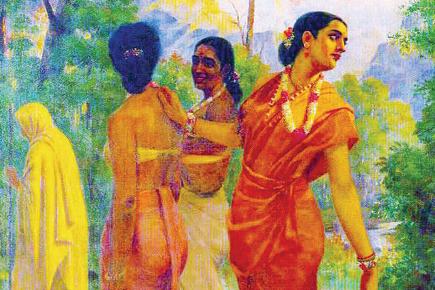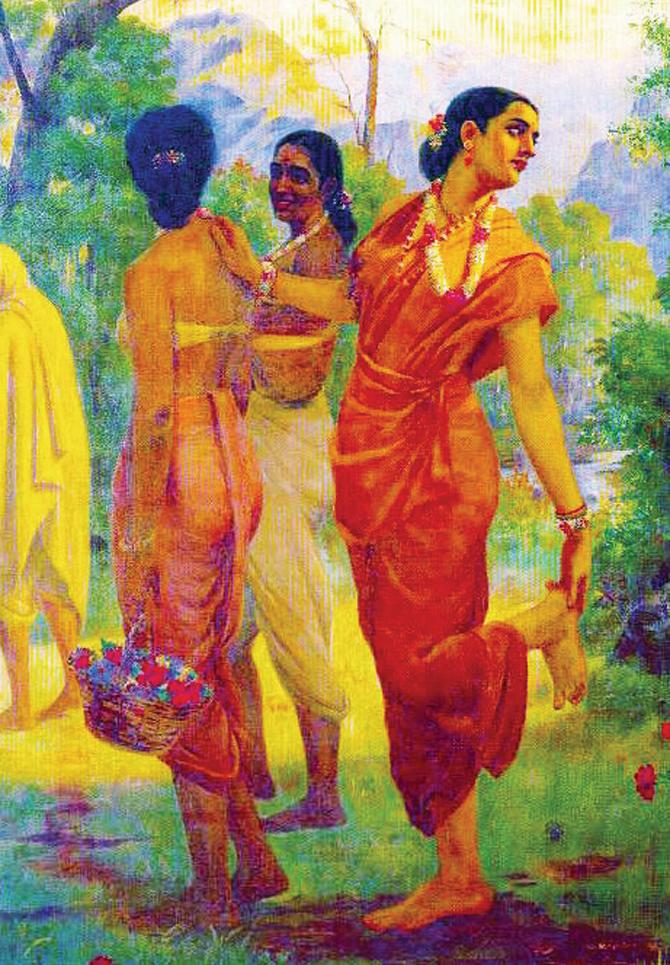An artist and an author discuss the male gaze, right from Raja Ravi Varma to contemporary cinema

Love him or hate him, it’s hard to ignore Raja Ravi Varma, whose works pervade a national consciousness. His rendition of Indian women — whether inspired by mythology or borrowed from reality, a milkmaid or the goddess Saraswati — leaves viewers perplexed. The protagonists of his paintings are emblems of femininity, and that, precisely, is the problem. “Raja Ravi Varma’s works embody the dominant cultural way of looking at women as passive or inferior to men; they don’t do anything to critique the status quo,” says Sharmistha Ray, artist and founder of Bellevue Salons, a platform for conversations.
ADVERTISEMENT

On Friday, in a new edition of Bellevue Salons, Ray will be in discussion with author and mid-day columnist Rosalyn D’Mello at the Piramal Museum of Art to talk about an often-heard and often-misunderstood concept — the male gaze — in visual, literary and performative arts. What could be a more fitting backdrop than the acclaimed artist’s works, on exhibit as part of the museum’s ongoing show Pages of a Mind — Raja Ravi Varma — Life and Expressions? If you think it’s cheeky to critique Varma while in the midst of his paintings, Ray feels differently. “The women in Varma’s paintings had their own feminine wiles albeit, capable of both seduction and arousing our sympathies. Of course, I’m simplifying the matter, but overall, the artistic strategies for depiction of either gender are quite canonised in Varma’s works. These stereotypes were enforced by the social milieu and vice-versa, given Varma’s popularity at the time.”
If you think Ray paints Varma as a product of his times and is playing it safe, then that is not the case. This conversation is going to be about a lot of confrontation, says Ray. “You can really draw a straight line from Varma to popular stereotypes today of women in cinema,” she says. We suggest that audiences throw in that question about Rang Rasiya, the 2008 film on Varma, which furrowed the Censor Board’s brow for its nude scenes.
Rosalyn D'Mello
For those of us who’d like to delve into the male gaze and India’s literary tradition, take cues from D’Mello. “India has many literary histories. If you look at the saint poets, like Meerabai and Akka Mahadevi, they resisted the conventional male gaze by having a divinity as their muse. They subverted the traditional gamut of what constitutes womanly behaviour,” she writes over e-mail.
D’Mello subverts the male gaze in her recent book, A Handbook for my Lover. “Written to a 30 years older lover who is a photographer, the book consciously sets itself up to play with the gaze, turning the spotlight on someone who is otherwise known to document the world. Here, he becomes the muse being gazed at. However, he is not objectified,” she says. Will Varma fans say the same about the artist’s women figures?
Round off this conversation with Sangeet Bari’s playful and subversive lavani performance.
Where: Piramal Museum of Art, Piramal Tower, Peninsula Corporate Park, Lower Parel (W)
When: April 29, 7 PM - 9 PM
 Subscribe today by clicking the link and stay updated with the latest news!" Click here!
Subscribe today by clicking the link and stay updated with the latest news!" Click here!









